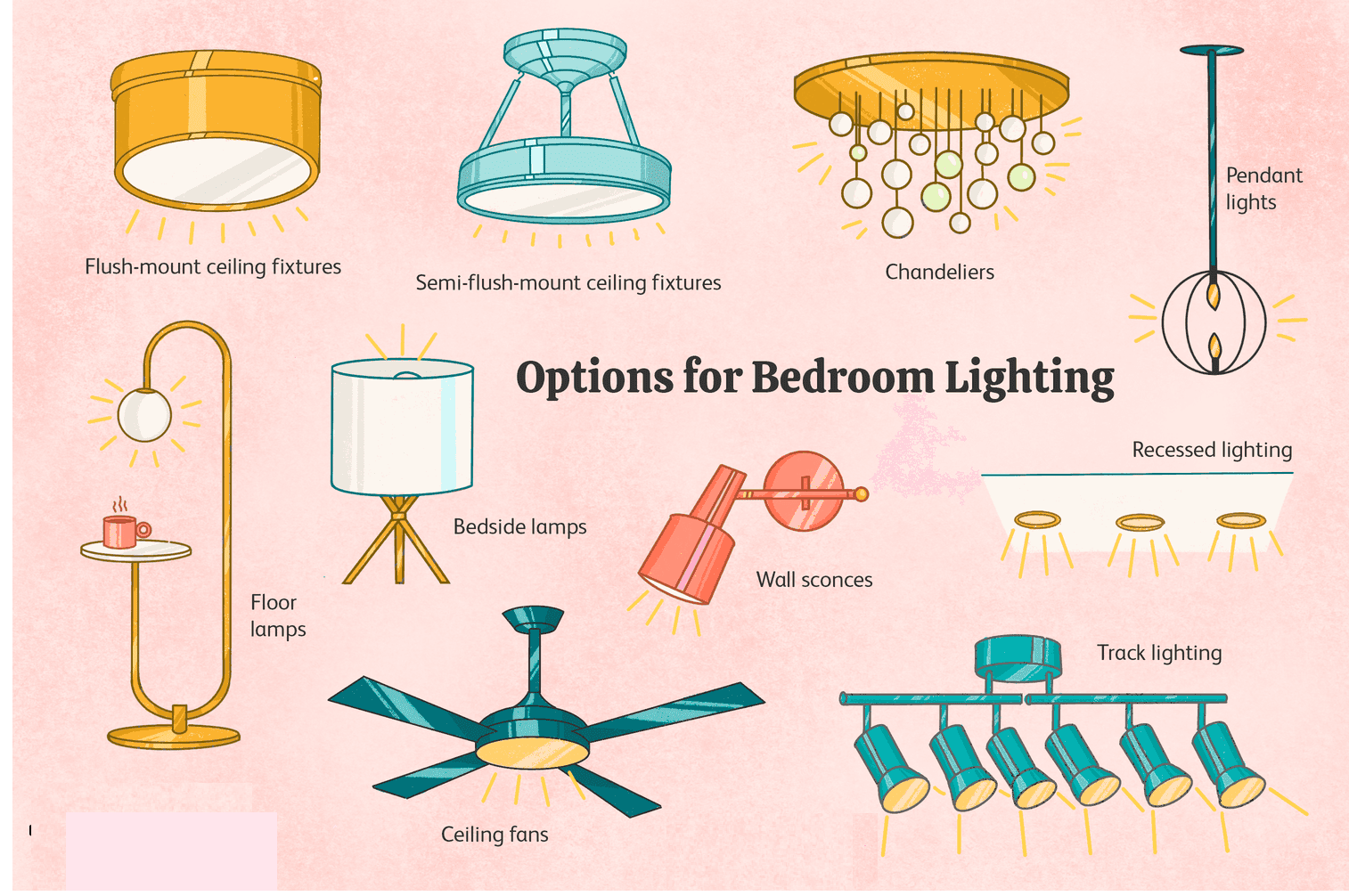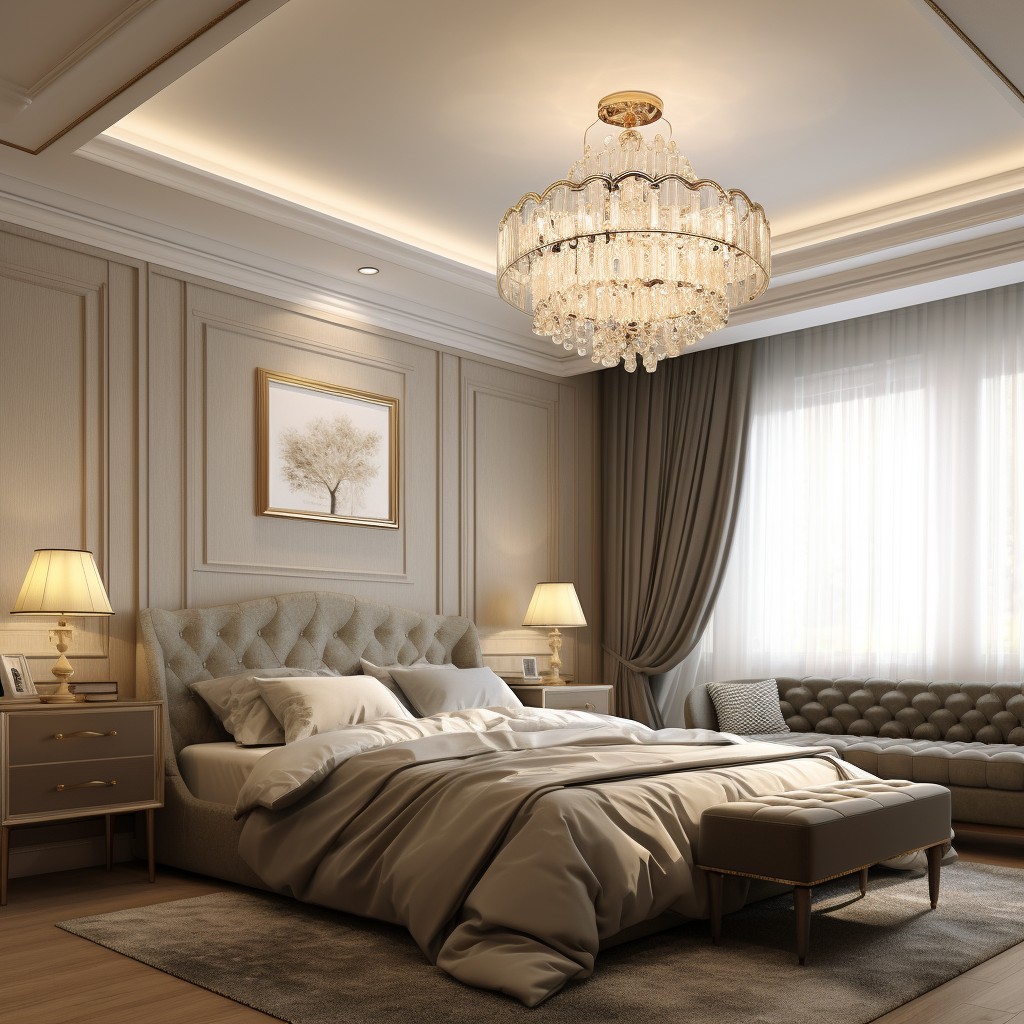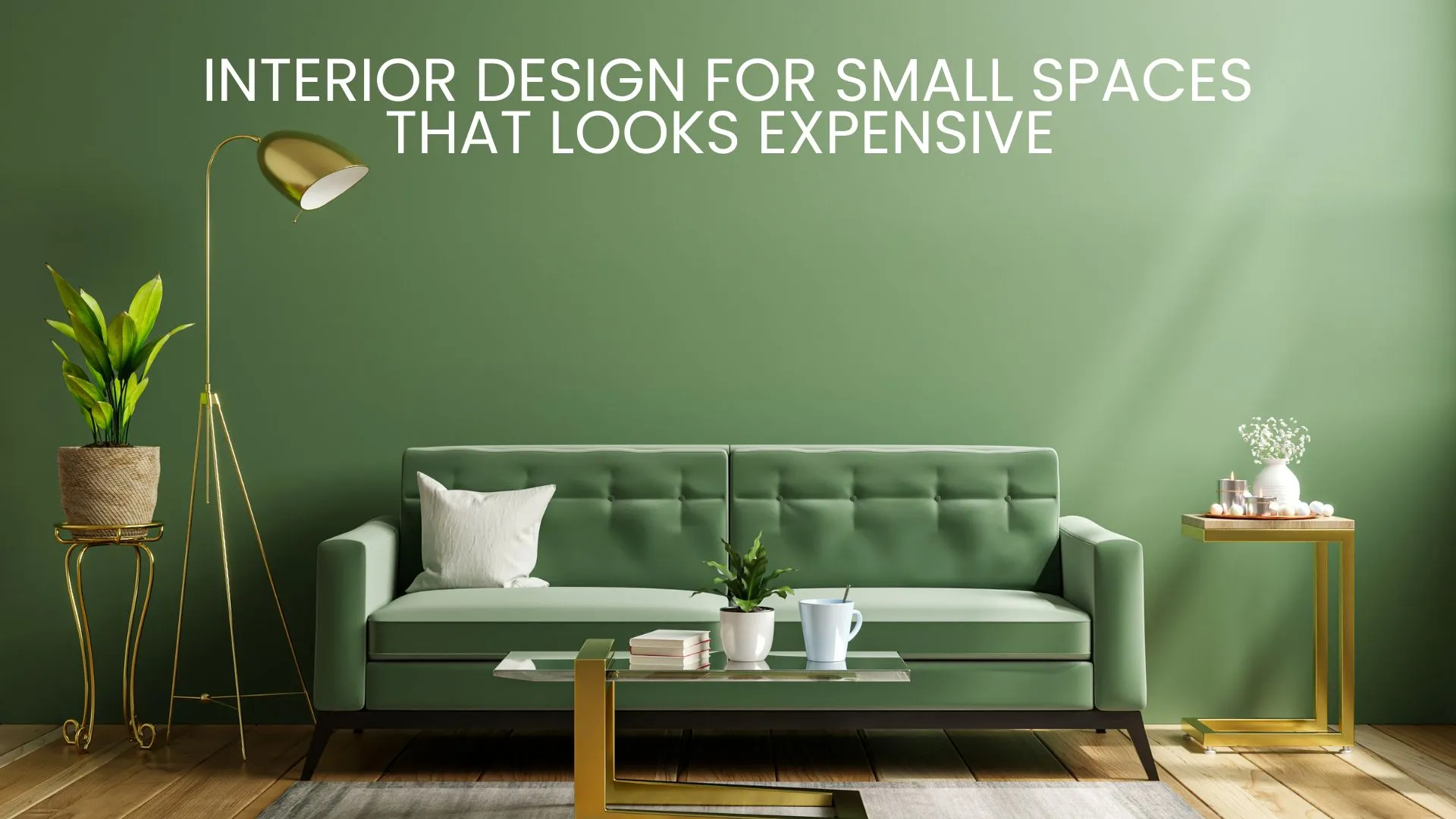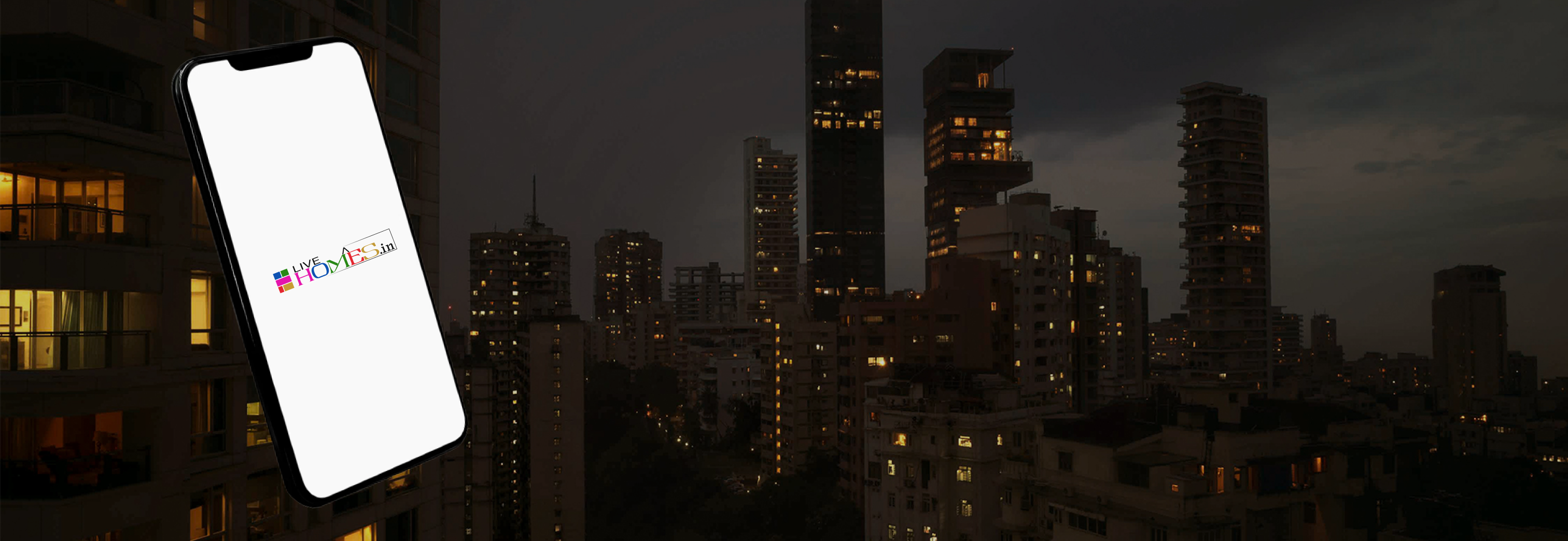Creating an ideal lighting scheme for a bedroom involves layering different types of lighting to ensure functionality, comfort, and a pleasant aesthetic. Here’s a detailed look at the various aspects of bedroom lighting:
1. Ambient Lighting
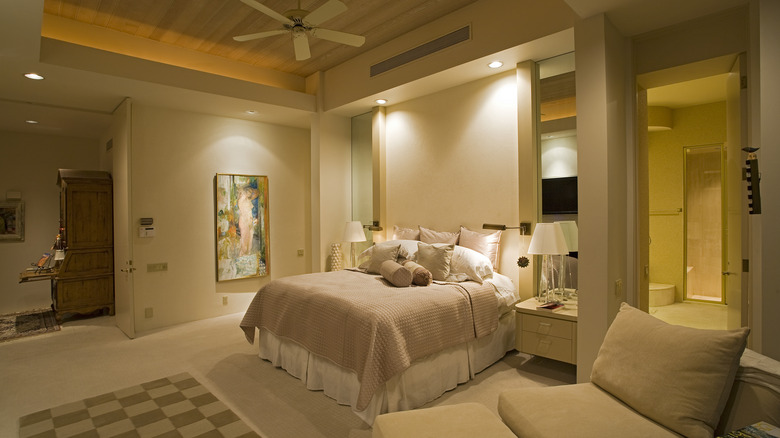
Ambient lighting provides overall illumination for the bedroom. It should be soft and diffused to create a comfortable atmosphere.
- Ceiling Lights: Central fixtures that provide general lighting.
- Flush Mounts: Fixtures that sit close to the ceiling, suitable for rooms with low ceilings. They distribute light evenly and are unobtrusive.
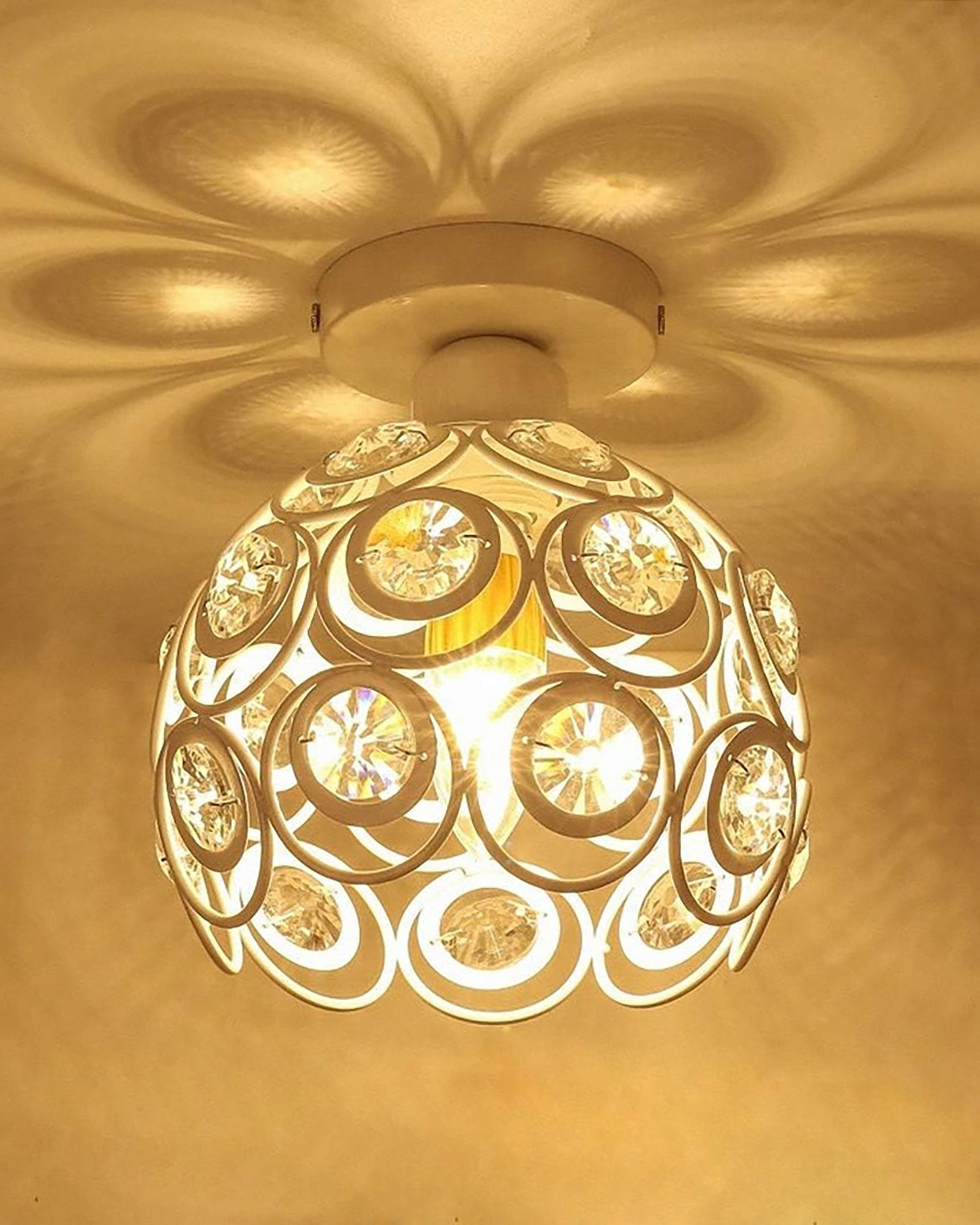
- Semi-Flush Mounts: Hang slightly below the ceiling, offering a blend of direct and diffused light, adding a bit more style compared to flush mounts.
- Chandeliers: Add a touch of elegance and serve as a focal point. They work best in larger bedrooms with higher ceilings.

- Recessed Lighting: Installed into the ceiling for a clean look, these lights can be spread across the room to ensure even illumination without taking up space.

2. Task Lighting

Task lighting focuses on areas where specific activities like reading, dressing, or working occur.
- Bedside Lamps: Essential for reading in bed and adding a layer of soft, focused light.
- Table Lamps: Available in various styles, they provide direct light and can enhance the room's decor.
- Wall-Mounted Reading Lights: Adjustable and space-saving, these lights can be directed to where light is needed without taking up space on nightstands.
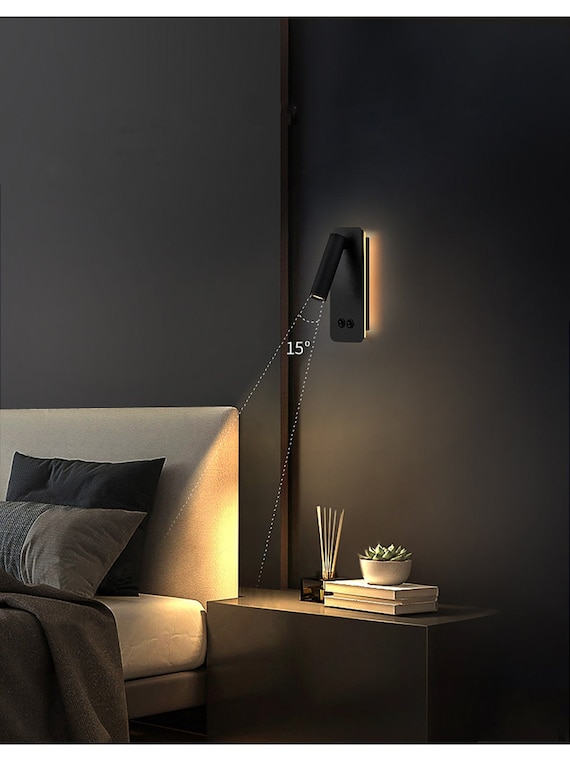
- Dressing Area Lights: Ensure adequate illumination for grooming and dressing.
- Vanity Lights: Typically mounted around mirrors, they provide even, shadow-free light ideal for makeup application and grooming.
- Desk Lamps: If the bedroom includes a workspace, desk lamps provide focused lighting for tasks.

3. Accent Lighting
Accent lighting highlights specific areas or features, adding depth and dimension to the bedroom.
- Wall Sconces: Mounted on the wall, these lights add a decorative element and provide soft, diffused light. They can flank the bed or highlight artwork.
- LED Strip Lights: Flexible strips that can be placed behind headboards, under beds, or around architectural features to create a subtle glow.
- Picture Lights: Small fixtures used to illuminate artwork or photographs, adding a touch of sophistication.
4. Decorative Lighting
Decorative lighting fixtures enhance the room's aesthetic appeal and serve as focal points.
- Pendant Lights: Hanging fixtures that add style and can serve as task lighting over bedside tables or seating areas.
- Fairy Lights/String Lights: Create a cozy, whimsical atmosphere when draped around bed frames, windows, or mirrors.
| "Best Builders Floor Apartment in Chennai" |
5. Natural Lighting
Maximizing natural light can make the bedroom feel more open and inviting.
- Windows: Using light, airy curtains can enhance natural light during the day. Sheer curtains allow for privacy while letting light in.
- Skylights: Introduce more natural light into the room, ideal for rooms with limited wall space for windows.
6. Energy-Efficient Lighting
Using energy-efficient lighting options helps reduce energy consumption and costs.
- LED Bulbs: Long-lasting, available in various color temperatures to create the desired ambiance, and more energy-efficient than traditional incandescent bulbs.
- CFL Bulbs: Compact fluorescent lamps that offer energy savings compared to incandescent bulbs.
7. Smart Lighting
Smart lighting offers convenience and customization.
- Smart Bulbs: Controlled via smartphone apps or voice assistants, allowing adjustments in color and brightness. They can be programmed for different times of day or activities.
- Smart Plugs: Convert regular lamps into smart lamps by plugging them into smart plugs, enabling control via smart devices.

8. Specialty Lighting
Specialty lighting can add functionality and convenience to the bedroom.
- Dimmer: Allow you to adjust the brightness of the lights, creating a relaxing atmosphere for winding down or a brighter setting for activities.
- Motion Sensor Lights: Useful for closets or pathways, these lights turn on automatically when movement is detected, providing convenience and safety.
9. Night Lights
Night lights provide low-level illumination to help navigate the room in the dark without disturbing sleep.
- Plug-In Night Lights: Simple, energy-efficient lights that can be plugged into wall outlets, often with sensors to turn on automatically in the dark.
- Under-Bed Lights: LED strips placed under the bed that provide a gentle glow when you get up, often motion-activated.
10. Ceiling Fans with Lights
Combining lighting with ceiling fans provides both illumination and air circulation.
- Fan Lights: Integrated lighting in ceiling fans, offering dual functionality. They can be controlled independently to adjust light and fan speed.
Lighting Tips for Bedrooms
1. Layer Lighting: Combine ambient, task, and accent lighting to create a versatile and comfortable space.
2. Control Systems: Use dimmers and smart controls to adjust lighting levels based on time of day and activities.
3. Warm Light: Choose bulbs with a warm color temperature (2700K to 3000K) to create a cozy and relaxing atmosphere.
4. Light Placement: Ensure that light sources are positioned to avoid glare and shadows, especially in task areas like reading nooks or dressing tables.
5. Balance and Symmetry: For a balanced look, use pairs of lights, such as matching bedside lamps or wall sconces.
By thoughtfully combining these different types of lighting, you can create a bedroom that is both functional and inviting, tailored to your specific needs and preferences.
Also read: 21 Kitchen Color Combination for your Kitchen
https://www.livehomes.in/blogs
